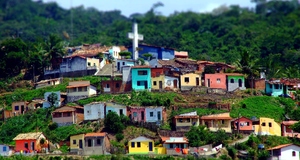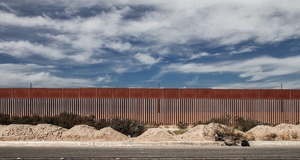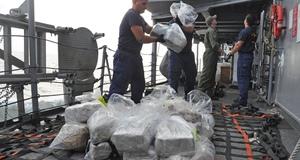Featured Article:Mexican Drug Activity, Economic Development, and Unemployment in a Rational Choice Framework
By
2013, Vol. 5 No. 09 | pg. 1/4 | »
IN THIS ARTICLE
KEYWORDS
From his inauguration in 2005 to the end of his presidency in 2012, Mexican President Felipe Calderon presided over one of the most violent periods in his country’s history. Making good on one of his election promises, Calderon unleashed the country’s military against drug trafficking organizations (DTO’s) and other criminal gangs who usurped authority from local governments in the northern and western parts of the country. The result has been a brutal and sustained war between Mexico’s security forces and the drug cartels. U.S. media outlets report daily violence from Northern Mexico, ranging from hit and run guerrilla strikes on police checkpoints to grenade attacks in shopping malls and beheadings in town squares (Seper, 2010). Mexico’s inability to curb drug-related violence has become so urgent that a recent report from the U.S. Joint Forces Command’s 2008 Joint Operating Environment ranked America’s neighbor to the south at the same level as Pakistan regarding the country’s probability of becoming a failed state (U.S. Joint Forces Command, 2008). Along with the ongoing violence, Mexico has undergone a period of economic hardship over the last two decades. Shortly after the passage of the Northern American Free Trade Agreement (NAFTA) in 1994, Mexico experienced a dramatic devaluation of its currency over a relatively short period of time. Known as “El Error De Diciembre” or the Mexican Peso Crisis, the sudden crash of the peso was believed to be prompted by massive deficit spending and fraudulent lending practices on behalf of outgoing President Carlos Salinas de Gortari. In addition to President Gotari’s questionable financial policies, the assassination of presidential candidate Louis Donaldo Colosio triggered a massive withdrawal of foreign currency reserves and resulted in general disinvestment from Mexico’s fragile economy (Villarreal, 2010). A wider crisis was eventually averted by a massive financial aid package on behalf of the U.S. Treasury, fellow NAFTA-signatory Canada, and the International Monetary Fund (IMF) (Truman, 1996). While the Mexican economy eventually recovered and experienced a few years of growth, different economic sectors were significantly impacted by NAFTA and related legislation. Even before NAFTA was ratified, policymakers in Mexico anticipated a negative impact on domestic agriculture, which they felt would not be able to compete with the collectivized and industrialized farming sectors in the United States and Canada. Economists anticipated that “total farm employment in Mexico would decline by an estimated 800,000 workers” after the passage of NAFTA. While various Mexican presidential administrations promised assistance to farmers and ranchers to compete with duty-free imports, support was not ultimately granted due to austerity measures implemented by the Mexican Treasury shortly after the Peso Crisis. Through agriculture liberalization practices and farmland consolidation, many rural farmers found it hard to compete with large-scale and high-tech farming operations which specialized in “cash crops” intended for export. Researchers believe that Mexico’s rural agricultural sector decreased from 8.1 million workers to 6.8 million workers from 1993 to 2003. Dwindling jobs prospects among Mexico’s once strong agricultural sector prompted a period of massive urban migration during the late 1990’s, with thousands, if not millions of people migrating to urban centers throughout the country. While many dispute NAFTA’s role in the influx of urban migration, most agree that the treaty ushered in a period of industrialization; historically, most countries transitioning from an agricultural economy to a more industrialized economy experience a period of urban population growth (Villarreal, 2010).Despite Mexico’s economic woes, the country has enjoyed a very low unemployment rate. From 1991 to 1997, Mexico’s average official unemployment rate was 3.7%. While the unemployment rate varies between different economic sectors and geographic areas, it is quite remarkable considering that the United States experienced 5.8% unemployment while Canada had 9.7% unemployment during a time of economic growth and stability (Martin, 2000). Martin attributed the rosy unemployment figures to two phenomena that differentiate Mexico’s economy from the post-industrial economies of its fellow NAFTA signatories. First, just as Mexico has experienced a period of internal resettlement and relocation, millions of Mexicans have fled unfavorable economic and social conditions through legal and illegal migration to other countries. Anywhere from twelve to fifteen million undocumented immigrants currently reside in the United States alone, the vast majority of them Mexican (Knickerbocker, 2006). Individuals who may have otherwise remained unemployed in Mexico sought opportunities abroad and are not counted in the country’s unemployment figures. Second, the figures produced by the Mexican Government do not account for participants in the country’s “informal economy.” Employment in the “informal economy” can range from legitimate part-time labor to wages earned by engaging in illegal activity. Those participating in the “informal economy” often do not seek government assistance, do not pay into the country’s social security system, and do not declare their income to local or federal tax authorities. While it is unknown how many participate in the country’s informal economy, economists believe that it is enough to have a significant impact on Mexico’s overall unemployment figures (Martin, 2000). Mexico’s informal financial system has functioned as a nexus between the legitimate government-regulated economy and the underground economy. While many informal economy participants are involved in semi-legitimate business enterprises and part-time employment, a large portion take part in the drug trade. Killebrew estimates that as many as 450,000 Mexican citizens participate in the cultivation, production and trafficking of illegal substances. Drug sales are believed to account for as much as 5% of Mexico’s Gross Domestic Product (GDP) (2011). While unemployment and poor economic conditions are just one of many variables that have impacted the growth of the drug trade, there is no denying that two decades of economic turbulence have greatly contributed to Mexico’s current state of insecurity. And while many researchers have speculated about the impact of unemployment and poor economic performance on the drug trade and drug-related violence, few have attempted to analyze the correlation between the two phenomena. Literature ReviewGiven the massive growth of the drug trade and associated violence in the presence of declining economic conditions in Northern Mexico, how, if at all, are these phenomena related? In terms of a criminological framework, a number of criminal justice scholars have attempted to analyze the violence that has plagued Mexico through the Social Conflict Theory, a modified version of the Routine Activities Theory, and the Rational Choice Model. While each paradigm seeks to describe the conflict from the perspective of class warfare or a lack of civic guardianship, one theme that has been repeated throughout much of the available literature is the erosion of state institutions throughout Mexico. In some of the poorest parts of Mexico, local, state and federal government institutions are almost nonexistent. From social welfare services to local hospitals to city councilmen and politicians, many towns and cities throughout Mexico lack basic government services and political representation. Even Mexico’s local police departments and security services, which are often the most visible symbol of government control, are noticeably absent. In his analysis, Manwaring described how in these ungoverned spaces, a criminal insurgency has taken root and slowly evolved over the course of several decades. In northern Mexico, the so called “Big Four Gangs” (the Juarez, Gulf, Sinaloa, and Tijuana cartels) did not materialize in a vacuum; these groups represent “generational gangs” with a forty and fifty year legacy that includes the membership of grandfathers, fathers, sons and grandsons. Manwaring believes that gang violence has progressed from low level crime and protection rackets (first generation) to black market smuggling of illegal goods and services (second generation) to asserting control over ungoverned territories or areas affected by political corruption (third generation). According to Manwaring, present-day cartels represent “third generation” street gangs. While groups at each tier are motivated by an entrepreneurial mindset and the need to control commercial markets, what distinguishes a third generation criminal syndicate from first and second generation organizations is how it outwardly challenges the sovereign control of the State. Instead of conforming to their environment, third generation criminal syndicates aim, (1) to neutralize, control, depose, or replace an incumbent government, (2) to control parts of a targeted country or sub-regions within a country and create autonomous enclaves that are sometimes called criminal free-states or para-states, and (3) in doing so, radically change the authoritative allocation of values (governance) in a targeted society to those of criminal leaders (2007, pg. 6). These third generation groups have accomplished their mission by simultaneously eroding Mexico’s state institutions and attacking the country’s democratic process. In the cartel’s concerted campaign to undermine the rule of law, Mexico’s police force and judiciary has been totally and utterly demoralized. Faced with the cartel’s policy of “plata o plomo,” police officers, prosecutors and judges have the choice of accepting bribes and working in concert with these organizations or facing the prospect of having their loved ones murdered or being assassinated themselves (Widner et al., 2011). Law enforcement officers are so marginalized and corrupted by the cartels that Manwaring cites a story from Sinola where local officers actually assisted cartels by providing protection for drug and human trafficking operations (2007). With Mexico’s criminal justice system under constant assault, the country’s democratic values are at risk of being destroyed as well. Any politician that endorses a policy or belief counter to that of the cartels risks a gruesome and often public death. Freedom of speech is severely limited, as journalists who publish stories critical of DTO’s have been silenced or assassinated. Manwaring has characterized Mexico as an “Anocratic state” or “a state that has the procedural features of democracy but retains the characteristics of an autocracy” (2007; pg. 29). In an environment devoid of central or regional government control, criminal justice researchers have speculated about why so many Mexicans appear to accept the presence of organized criminal networks or participate in these networks themselves. Some researchers believe that the current struggle represents something akin to Karl Marx’s concept of “Class Warfare” and the Social Conflict Theory, where “the disadvantaged of large cities will challenge the established urban social order violently” (Acharya, 2011). In her article comparing and contrasting Mexico and Colombia’s drug wars, Scherlen observed a number of socioeconomic indicators that could lend credence to this argument. While Mexico’s official unemployment rate has been hovering around 3.5% for the last two decades, Scherlen cited statistics from the 2007 and 2008 United Nations Human Development Report in an effort to illustrate the current state of inequality. According to the report, Mexico’s top richest 10% of the country are responsible for 40% of consumption, while the lowest 10% are responsible for 1.6% of all domestic consumption. In addition, Scherlen pointed to Mexico’s current Gini score, which is a coefficient representing a country’s level of socioeconomic inequality in terms of access to education, healthcare services and employment. While Mexico’s score of .461 out of 1.0 may seem high, the Gini score of the United States in 2009 was .468, on par with the People’s Republic of China (Scherlen, 2009). Though Scherlen does not articulate an irrefutable argument in support of the Social Conflict Theory, Acharya attempts to argue a similar point in her analysis of urbanization in the Northern Mexican state of Nuevo Leon. Partially as a byproduct of NAFTA and industrialization, Nuevo Leon has become increasingly urbanized over the last fifty years. In 1930, 40% of the population lived in urban areas. In 2005, the number climbed to 95%, with most of the population relocating to the Monterrey Metropolitan area and its surrounding suburbs. Sandwiched next to the US-Mexico Border, Nuevo Leon has become a major trafficking corridor for DTO’s and human smuggling organizations attempting to ferry drugs and people into the United States. While her research primarily addresses the negative effects of urbanization, Acharya attempted to explain the current situation from the perspective of the Social Conflict Theory. With a large number of rural farmers leaving the agricultural sector for the factory jobs in Monterrey and other cities, people are constantly looking for opportunities in unskilled labor and manufacturing. In the cities, the gap between rich and poor is readily apparent, and is represented in the unequal access to employment, healthcare, and basic services. Acharya argues that the urban elite continue to amass wealth while failing to provide the urban poor a place in the legitimate economy. Destitute and hopeless, many of the urban poor find work in the city’s informal and underground economies. Attempts by the urban elite to control the informal economy often result in violence, as represented by the hostilities which manifested shortly after President Calderon deployed troops to Nuevo Leon (Acharya, 2011). While the Social Conflict Theory would be a convenient explanation, Widner et al. took a different approach by viewing the current violence through the spectrum of the Rational Choice Model (and by extension, the Routine Activities Theory). According to this paradigm, criminal activity is driven by a cost-benefit analysis whereby an offender subconsciously calculates the benefits of committing a crime, the probability of getting caught, and the sanctions related to capture. As cited earlier, the probability of getting caught in many northern Mexican cities is low; the local security forces have been completely infiltrated by the drug cartels and most cities lack affective guardianship. In an area with poor guardianship, the opportunity cost of getting caught is also low. The opportunity cost is also affected such that if “[…] an individual is unemployed or employed in a low-paying job, the opportunity cost or sacrifice of spending time in jail is reduced” (Widner et al., 2011; pg. 606). To test their theory, Widner et al. conducted a bivariate regression analysis that compared criminal arrests and different socioeconomic indicators. While murder and other violent crimes were not analyzed, researchers identified a strong correlation between arrests for various crimes and the Gross Domestic Product (GDP) per capita in the sampled city. They found a decrease of 26 and 21 arrests for rape and fraud respectively for every one million peso increase of real per capita GDP. Strangely, a positive relationship was found between increases in GDP and arrests for theft. Widner et al. postulated that “as GDP increases and employment increases, fewer crimes in general will be committed and the probability of catching the remaining offenders increases (the effectiveness of law enforcement increases)” (2011; pg. 609). One fundamental issue that was not addressed by Widner et al.’s research is how a criminological theory that outlines the decision making process of a single individual can explain membership in an organized criminal syndicate. In an extension of Widner et al.’s research, Arsovska & Kostakos (2008) referenced the Rational Choice Theory in an effort to explain illicit arms trafficking in the Balkans during the 1990’s and 2000’s. Though not directly related to Mexican DTO’s, Arsovska & Kostakos make some important points when considering individual motivations and behaviors in terms of organized crime. Rational Choice Theory is traditionally used to explain the decision-making process and behaviors of individual criminal actors. Under the theory, it is presumed that individuals engage in criminal activities for the purpose of economic gain. Arsovska & Kostakos note that organized criminal networks are the result of a convergence of individuals who share similar goals and cultural values. Influenced by different market factors and demand for an illicit good or service, the micro-level objective of achieving financial gain becomes a macro-level organizational goal for a criminal syndicate. Arosovka & Kostakos believe the Rational Choice Theory helps to explain how crime groups form and why individual actors seek membership in these groups. While their findings cannot be generalized to explain every aspect of Mexico’s drug war, it does provide a possible explanation as to the existence of DTO’s and why their ranks have swelled over recent years. While Widner et al. was looking to generate research in support of the Rational Actor Theory, many of his findings seem to affirm Acharya and Scherlen’s assumptions about Social Conflict. As the per capita GDP in certain areas decreases and the level of unemployment or underemployment increases, the number of arrests for certain crimes also increases. While not an ironclad affirmation of the Social Conflict Theory, Widner et al.’s findings warrants further research and analysis. Especially in the case of Mexico, which has experienced increasing levels of urbanization and industrialization over the last two decades, it would be interesting to look at the relationship between the unemployment rates, GDP per capita and the level of violence present in the northern cities that make up the drug corridor. MethodologyIn order to establish a relationship between urban economic conditions and drug violence along the US-Mexico Border, a measurable independent and dependent variables must be identified. As an extension of Widner et al.’s analysis of the relationship between per capita GDP and arrests for theft, fraud, and rape, drug violence will be defined by both annual aggregate homicide totals and municipal drug arrests in sampled Northern Mexican city. While data is available from official sources, it is important to consider that drug laws in Mexico are dramatically different than those in the United States. Whereas the United States has strictly-enforced narcotics possession laws, Mexico relaxed their own domestic possession laws in 2009 through legislative action. According to the new amendment to their federal criminal code, “[…] a police search that turns up a half-gram of cocaine, the equivalent of about four lines, will not bring any jail time. The same applies for 5 grams of marijuana (about four cigarettes), 50 milligrams of heroin, 40 milligrams of methamphetamine or 0.015 milligrams of LSD.” Mexican local and state police have been ordered to focus on arresting individuals who possess 1,000 times what is considered “personal consumption” levels. Former President Felipe Calderon’s Administration hoped that the redefined legal parameters would help law enforcement agencies refocus their efforts in apprehending narcotics dealers and traffickers rather than recreational drug users. This is in stark contrast with the United States, which reported 800,000 arrests for marijuana possession alone in 2008 (Lacey, 2009). As referenced in a fact sheet issued by the Mexican Embassy on August 20th, 2009, drugs covered by the amended legislation include opium, heroin, marijuana, cocaine, LSD, MDA, MDMA, and methamphetamine. Mexican state and federal authorities can still arrest those who “sell, distribute, supply and possess drugs with the intent of selling or distributing” or those who possess any other controlled substances outside the purview of the updated legislation (Embassy of Mexico, 2009). Given Mexico’s revised drug control laws, traditional arrest statistics, like those outlined by The Eighth United Nations Survey on Crime Trends and the Operations of Criminal Justice Systems, would not be helpful when comparing the number of drug arrests between the primary NAFTA signatories. A consistent metric for measuring drug-related activity between the Mexico and the United States would be arrests for possession with the intent to distribute and arrests for drug trafficking. Unfortunately, the Instituto Nacional De Estadistica Y Geografia Mexicana (INEGI-M) only provides drug arrest statistics under the nebulous title “en materia de narcoticos” or “narcotics matters.” This encompasses the gamut of narcotics-related crimes, to include possession with intent to distribute, trafficking, possession of drug precursors, and other offenses. In addition to potential issues of concern with the dependent variables, the official unemployment statistics pose a number of limitations that are worth noting. In his own analysis, Martin noted discrepancies between the official unemployment figures in Mexico and unemployment rates in the United States and Canada (2000). Martin advised that large segments of Mexican society are involved in the “informal economy;” few informal economy participants are entitled to federal government benefits and do not appear as part of official unemployment statistics. In addition to Martin’s observations, Knickerbocker proposed that official unemployment statistics have always been comparatively low due to the exodus of unskilled labor during the 1990’s and 2000’s. As a result of migratory patterns over the last two decades, a huge portion of the Mexican work force that may have been counted as part of the country’s unemployment rate left for economic opportunities in the United States and neighboring countries. While little is known about how this may have affected official unemployment statistics, Knickerbocker advised that anywhere from twelve to fifteen million undocumented immigrants of Mexican origin reside in the United States alone (2006). Considering that Mexico’s total population is approximately 112 million people, introducing a large number of these undocumented workers into the Mexican economy could have an enormous impact on the country’s official unemployment rate. Unfortunately few researchers have studied Mexico’s informal economy and little information exists regarding the size and scope of this economic sector. Instead of utilizing official unemployment rates, Widner et al. chose to observe the relationship between per capita GDP in different cities along the US-Mexico Border and specific violent and nonviolent crimes. While per capita GDP is not an adequate substitute for unemployment rates in different Mexican cities and does not take into consideration wealth disparity, Widner et al. showed that GDP is a good economic development indicator that is correlated with different criminal acts. In an extension of Widner et al.’s research, per capita GDP has been selected as one of the study’s independent variables. Despite the problems articulated by Martin and Knickerbocker, Mexico’s official unemployment statistics cannot be completely discounted. Even in the presence of a largely unknown and undefined informal economy, official unemployment statistics will be utilized as a secondary independent variable. As a relative comparison, unemployment rates from similarly-sized cities in the United States will also be selected and compared to their respective homicide and drug arrest totals.Continued on Next Page » Suggested Reading from Inquiries Journal
Inquiries Journal provides undergraduate and graduate students around the world a platform for the wide dissemination of academic work over a range of core disciplines. Representing the work of students from hundreds of institutions around the globe, Inquiries Journal's large database of academic articles is completely free. Learn more | Blog | Submit Latest in Criminology & Criminal Justice |


















